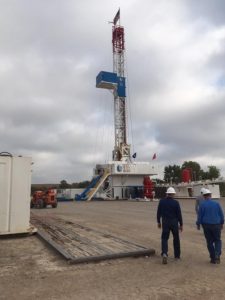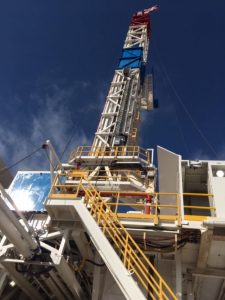
The future of oil and gas rig drilling is here. In fact, it has been for the past 7 years at Tulsa-based Unit Drilling Company where giant, modern-day computerized rigs are manufactured and sold.
The latest model? $20 million for Unit’s Boss Rig 414 that sits at the Unit yard, 7101 SW 29 street in southwest Oklahoma City, hidden only by the giant city hill built of landfill and waste.
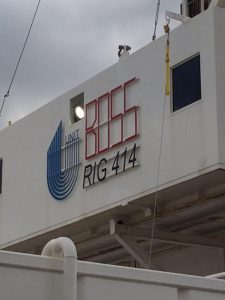
Boss Rig 414 is the 14th such rig built since 2012 by Unit and by mid-December will be on its way to a buyer in North Dakota who will use it to search for oil in the Bakkens. At least 32 trucks will carry the rig in pieces to the drilling site, a trip that could take a few weeks depending on the weather and what happens at ports of entry in the different states along the journey.
“Some of our peers use up to 80 trucks to haul their rigs,” explained Michael Bridges, a Unit Drilling Engineer who took OK Energy Today on a tour of the technologically advanced rig.
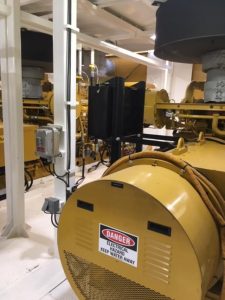
Powered by three massive engines that can run off of LNG, LPG or diesel fuel, the new rig awaits shipment. The rig can also run off power lines, something that”s important on BLM land where there are limitations,” according to Justin Loman, another Drilling Engineer for Unit.
Loman and Bridges, both former roughnecks as well as graduates from the University of Oklahoma, boasted of the giant rig’s ability to “walk” its way to another site on a multiple-well pad.
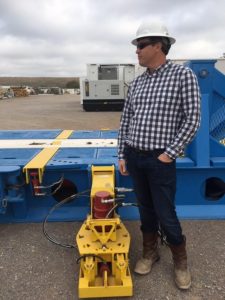
The “walk out” by a rig might take only 30 minutes to be accomplished, said Loman as he stood next to one of the legs.
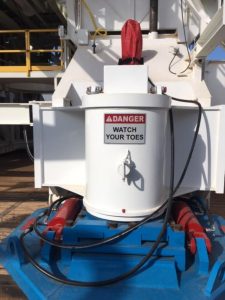
But it’s the computers that make the rig so modern. So modern said Bridges that “it’s designed to be a hammerless rig.” One that no longer requires a floor hand to pound massive pins into place when moving the rig or setting it up. The setup is done mostly by the computers that run the rig. While most rigs require cranes for setup, Boss 414 doesn’t require as much assistance from a crane.
“It’s a patented design,” said Michael D. Earl, Vice President of Investor Relations for Unit Corporation.
From the use of giant tongs used to lift pipe out of the ground to the creation of the right density of drilling mud, computers are at the heart of the multi-million rig.
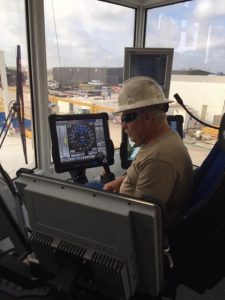
A driller typically works a 12-hour shift monitoring computer screens that cover virtually every aspect of the rig. With the touch of a screen, the driller can perform a function that used to take voice commands on the deck that sits 21 feet off the ground.
Unit even has a simulated control room where drillers go through training, much like the FAA has a flight simulator for pilots.
“We have training all the way down to floor hands,” said Bridges.
“One of our rigs has been running for five years. Some for three, Some for one. Non-stop operational,” according to Bridges. “It’s highly automatic and results in less wear on drill pipe, but we use a lot of hydraulics.”
And those hydraulics prevent a lot of injuries to oilfield workers. Especially back injuries from lifting heavy equipment.
“Two guys can run the floor,” stated Bridges. “Three’s a luxury.”
Each 400 series rig typically has a crew of a driller, an assistant driller, motorman, derrick operator, two floor hands and a rig manager. Some rigs might have two rig managers.
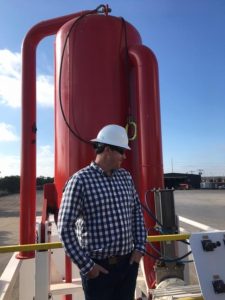
Loman was especially proud of the unit’s mud gas separator and the functions it performs in keeping the rig active.
“Mud’s kind of like the blood of the drilling rig,” he said, pointing to the agitators that stir the mud as the unit tries to create the correct viscosity.
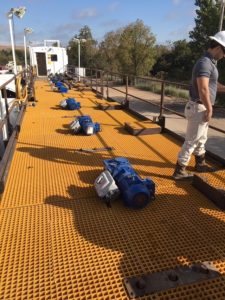
Bridges boasted of the pumps used for putting mud down the drill hole.
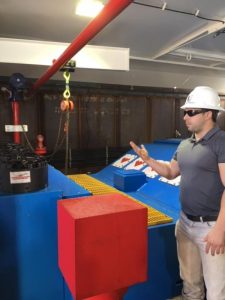
‘No one in the world is running these pumps,” he explained. “We have 5 systems instead of three systems used by competitors. The 5 cylinders are a big advantage. They eliminate a lot of noise in the mud and can pump up to 1,500 gallons of mud a minute.”
Under each rig is a massive drip pan which is used to prevent any kind of possible pollution from a leak.
“The company is focused on efficiency, safety and the environment,” said Earl.
So when’s Boss Rig 415 coming? That’s another issue, especially with the slowdown anticipated in the oil patch.
“We need a long-term contract. But a lot of AC (Alternating Current) rigs are sitting on the sidelines while this one’s being bought,” he said, pointing at Boss 414.
